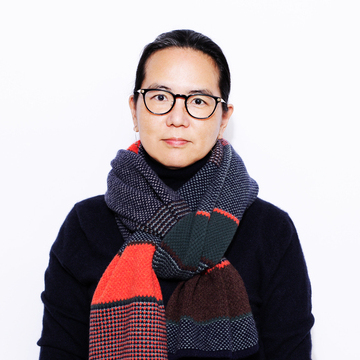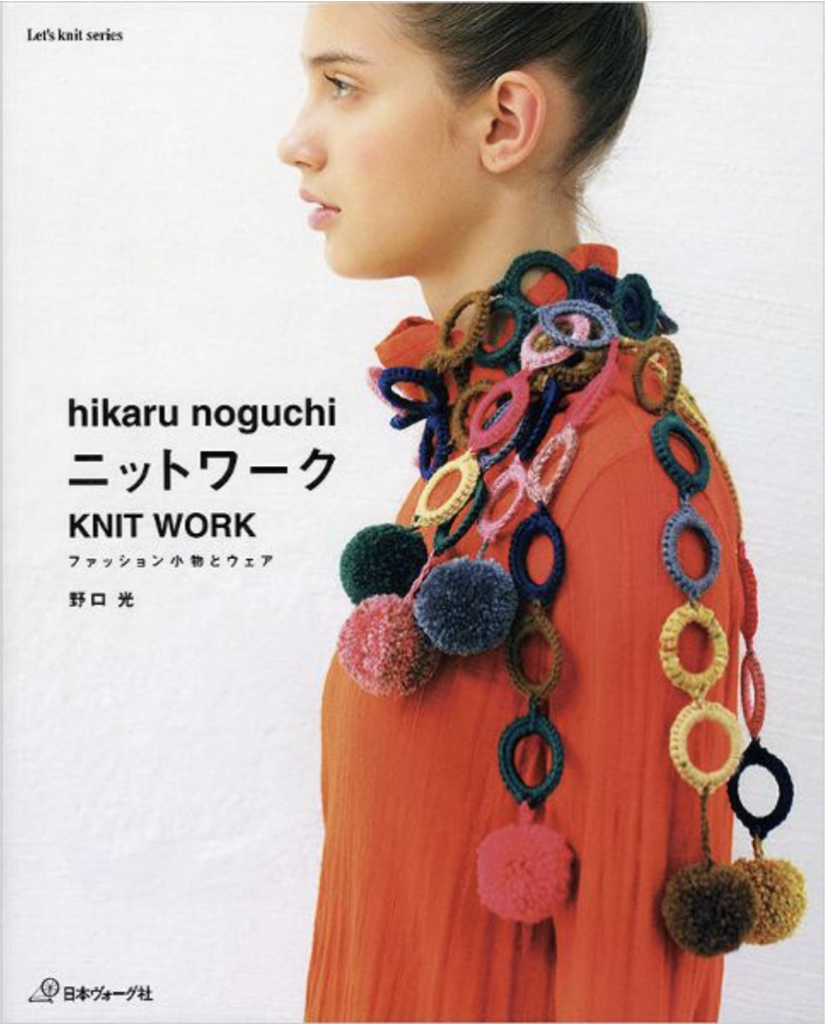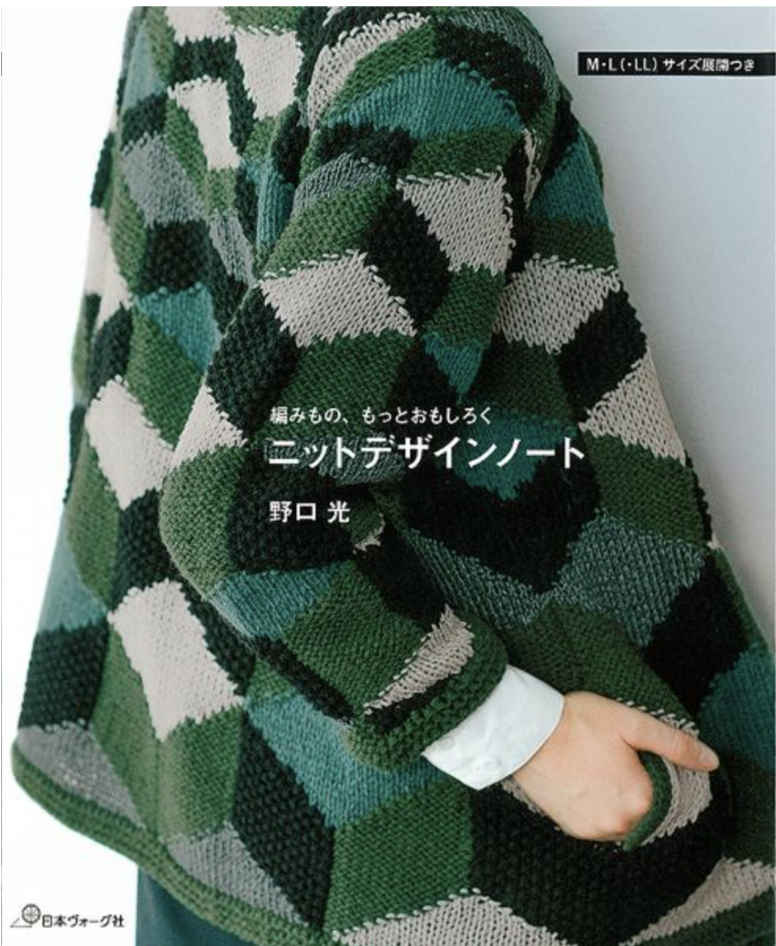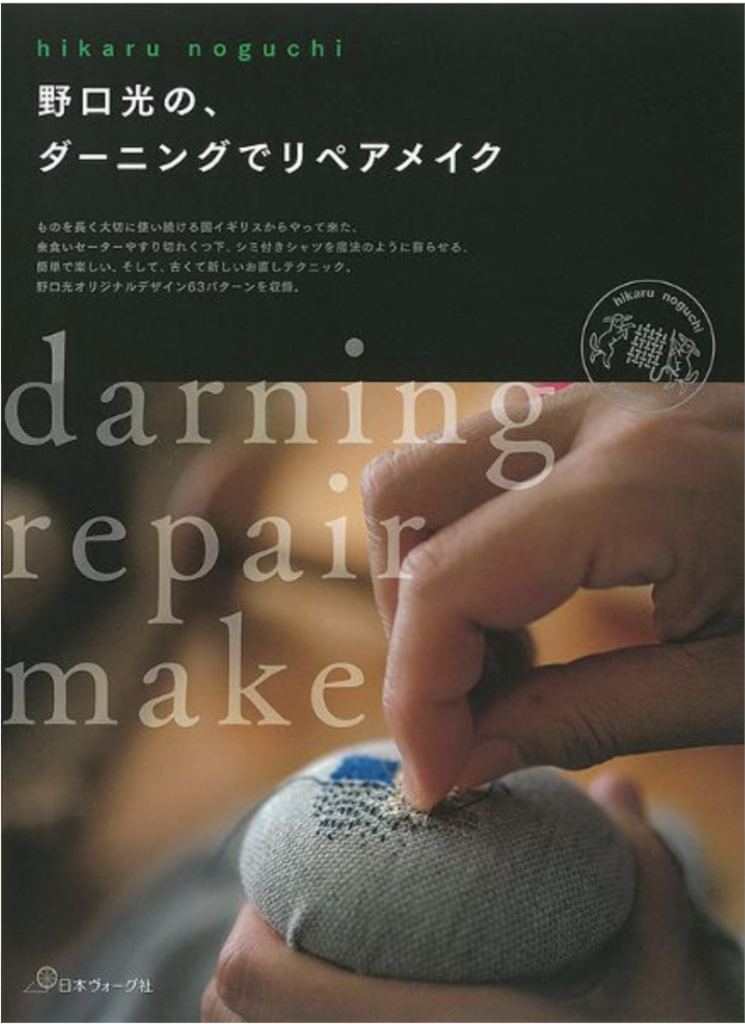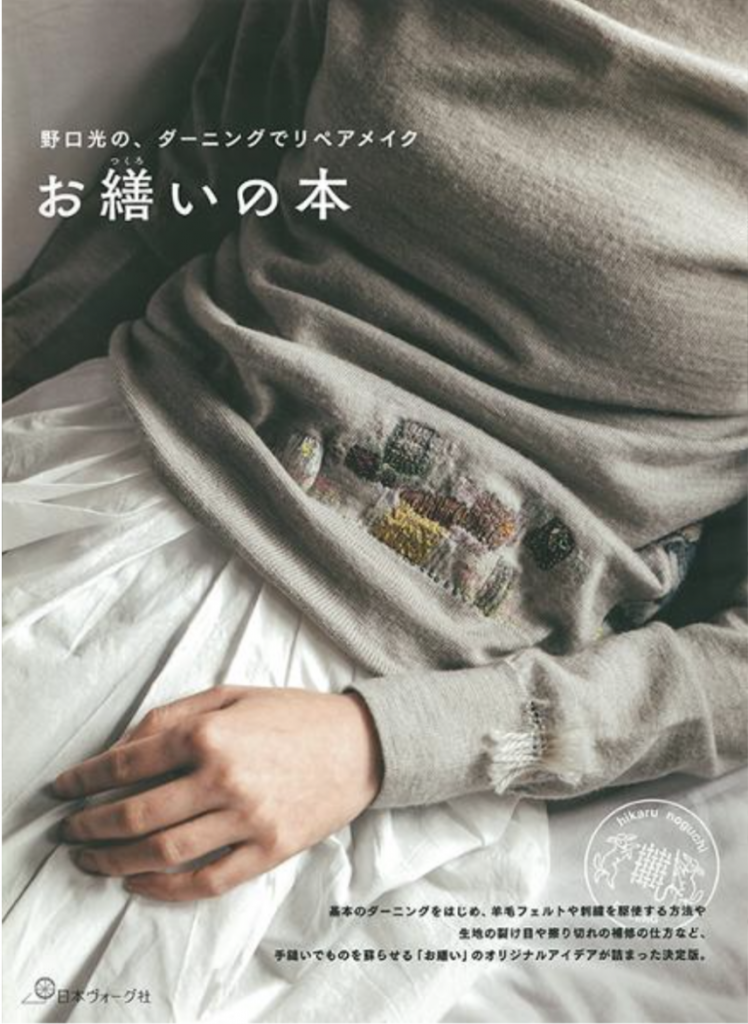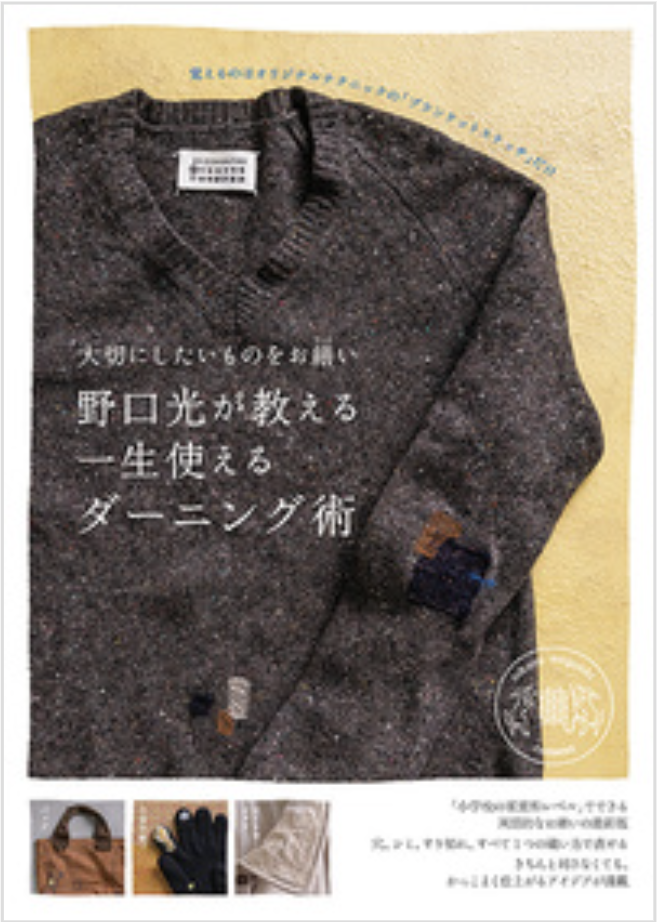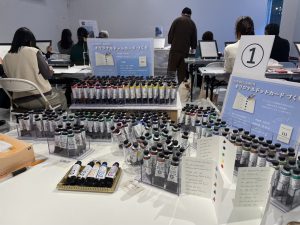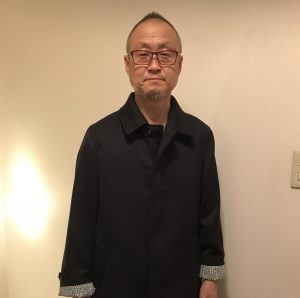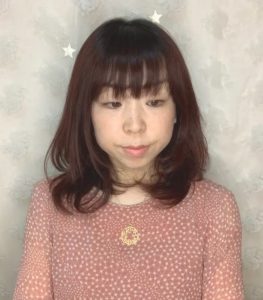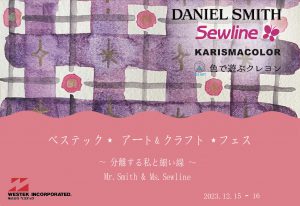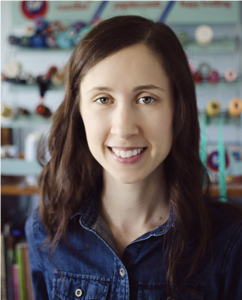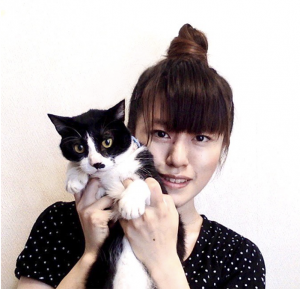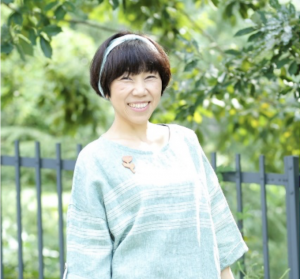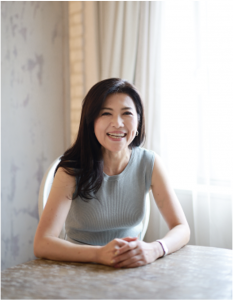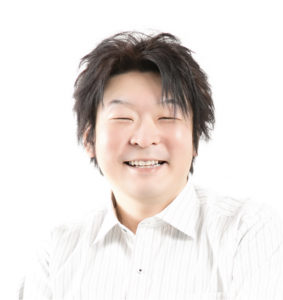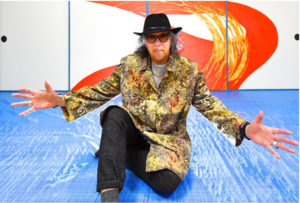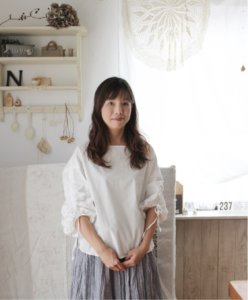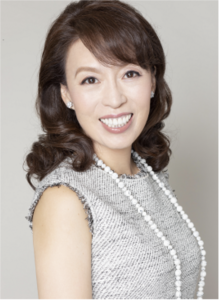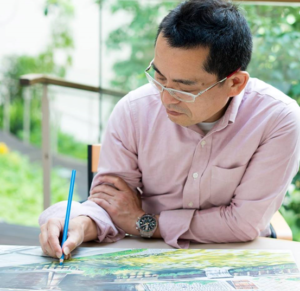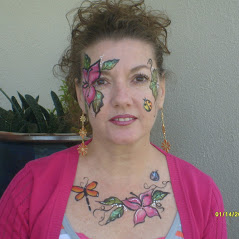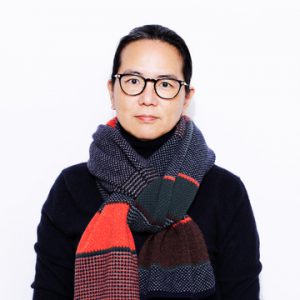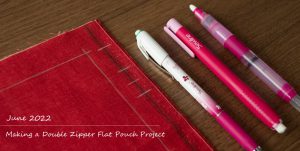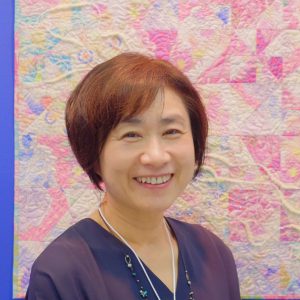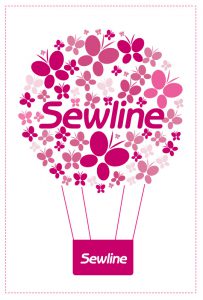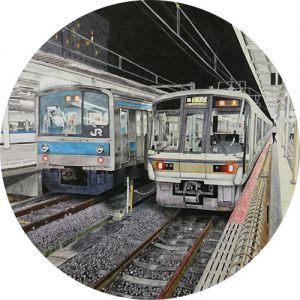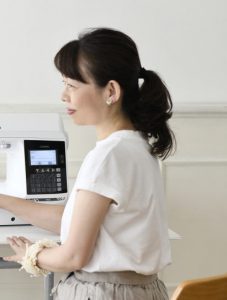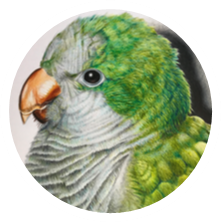#27ゲスト:野口 光
The Guest of September: Hikaru Noguchi
今月のゲスト:野口 光
東京生まれ。
1989年武蔵野美術大学、視覚伝達デザイン科卒業後、北ロンドンにあるミドルセクス大学のテキスタイル科に留学する。
卒業制作で作った一連のフェルト化させた編み地を張ったアームチェア、スツールやクッションが、インテリア紙の”ワールド オブ インテリア”のベストワークに選ばれ、またイギリスを代表する家具デザイナーのトム デクソン氏と共作するなど、ニット地のインテリア小物ブームのさきがけとなる。
1995年に英国工芸協会(CRAFT COUNCIL)の新人デザイナーをサポートする事業設立助成金受賞者に選ばれ、また登竜門であるチェルシークラフトフェアー にも出展するようになる。そしてバーニーズN.Yや、TAKASHIMAYA NEW YORKなどに、オリジナルのニット地を中心とした、インテリア、ファッション小物を制作、 卸しを始める。
1998年よりロンドンファッションウィーク、2002年よりパリコレクションに参加。
以来ニューヨーク、東京、ロンドンを中心に、世界10ヶ国、約150店が HIKARU NOGUCHIの商品を扱っている。
Guest of the month: Hikaru Noguchi
Born in Tokyo, Japan.
After graduating from Musashino Art University, Tokyo in 1989 with a degree in Visual Communication Design, Hikaru Noguchi moved to England where she studied textiles at Middlesex University in North London specializing in “knits.”
Her graduation project, a series of armchairs, stools and cushions upholstered with felted knitted fabrics, was selected as one of the best works in the World of Interiors by Interior Designer magazine. The company pioneered the boom in knitted interior accessories.
Finding a measure of artistic freedom and stimulation in England, which she had not found in Japan, she stayed on after completing her studies at Middlesex University to take up knitted textile design work, developing new and innovative textiles for furnishings, scarves, bags and garments.
In 1995, she was selected as a recipient of a grant from the Craft Council of Great Britain to support new designers and exhibited at the Chelsea Craft Fair, a gateway to success. She began producing and wholesaling interior and fashion accessories, mainly in original knit fabrics.
This direction has led to her collaboration with a number of British designers including Tom Dixon, Top Shop and projects for Barneys, Browns, Paul Smith women, Takashimaya New York and many other stores.
Her work developed into mixing texture, color and hand knit qualities…With influences from traditional knit patterns and techniques, such as fair-isle, Aran, embroidery and stripe. The sources of her inspiration are diverse…From flea markets all over the world to the paintings of De Chirico. She seeks a look that is both sophisticated and quirky, achieved through unusual juxtapositions of color and texture. Throughout, her fundamental theme is one of joie de vivre (joy of living).
Hikaru participated in London Fashion Week from 1998 and in the Paris Collections from 2002. She has participated in many shows and exhibitions all over the world. Since then, Hikaru Noguchi products are sold in 150 shops (boutiques and department stores) and in 10 countries, mainly in New York, Tokyo, Paris and London.
作品
インタビュー
Q.ダーニングの歴史はとても古くからあるのではないかと思います。ダーニングの歴史からいろいろと教えていただけますか?
ダーニングは英語で‘繕う‘という意味です。世界中どこの国どこの地域でも、衣類が傷んだら繕って着るということを日常生活のなかの針仕事をして行われていました。傷んだ服を「繕って着る」ということをしなくなったのは、日本でいうと、高度成長期に量販店で販売される服のバラエティが豊富になり、その後、値段も手ごろで質もそこそこのトレンドを意識したファストファッションが出てきてからになります。それによって服は繕うよりも買い直した方が手軽だし、傷む前に最新の服が欲しくなると衣類の消費動向がきっぱり変わってゆきました。傷んだら繕って着続けるという生活の中の習慣がなくなってしまいました。ダーニングは歴史的な刺繍など装飾目的で行う手芸の中のカテゴリーというよりも、必要に迫られてやっていたということです。
―なるほど。私も服の破けてしまったところを縫ったり…ということはあったんですが、野口さんのように綺麗な絵飾りのような感じは見たことがなかったので、これは何か特別なものがあるのではと思ったのですが…。
世代にもよりますが、昭和世代にとって‘繕う‘ということが‘貧困‘に繋がるイメージに繋がる人が多い。特に日本人は人前で新しい物、傷みのない物を着るということがマナーという考え方もあるので、傷んだりしている物を身に着けることにすごく抵抗があります。かけはぎのように、繕う時も新品同様に見えるようにするし、繕い跡が全く見えないようにするという考え方で、それはイギリスや他の国でも似たり寄ったりではあるのですが、特に日本はその傾向が強く見られます。
そのような中で、私のイギリスのデザイナー仲間であるレイチェル・マフューさんを10年ほど前に訪ねた際に、彼女がいつも作業着として着ているセーターに目立つ色で繕ってモザイク画のようになっているものを見せてもらいました。「これってどういうことなの?」と伺ったら、「何年も傷んでは繕い、傷んでは繕いを続けていったら、こんな広範囲にひろがっちゃったの。別に繕った跡は隠す必要はないでしょ?」と言われて、それはそうだと思いました。なぜ繕い跡を隠さなければならないんだろう。繕い跡から、レイチェルの作業風景や時間や物を慈しむ気持ちが伝わってきます。繕って着続けるということは全く恥じることではないし、むしろとてもクリエイティブな行為であるのに、自分を含めて大勢の人が‘繕い‘に関してそういったネガティブなイメージを持っている。そんな中で、レイチェルが全く違う考え方を示してくれました。‘繕う=ダーニング‘って面白いし深いなと思ったことがきっかけで、彼女から基本的なダーニングの仕方を習いました。その後、自分で色々と研究をして、現代の衣類に似合う家庭で簡単に繕えるようなテクニックやお道具を開発しています。
丁度インスタグラムが注目されてきたタイミングとぴったり合い、目立つ色で繕うダーニングが‘インスタ映え‘することで大勢の人が興味を持つようになりました。特に若い世代は繕い=貧困という考えすらない。針仕事や自分で修繕するということがあまりに身近でないので、とても新鮮に感じたようです。そういう意味ではとても特別な針仕事であるのは確かです。
Q.野口さんはテキスタイルデザインを勉強なさっていたとお聞きしています。どのようなものにデザインされていたのでしょうか?
武蔵野美術大学でグラフィックデザインを勉強した後、テキスタイルデザインを勉強するためにロンドンの美術大学に留学しました。構造テキスタイルデザイン科という織物と、つづれ織り、編み物のデザインを専門に勉強するコースでした。編み物もニットウェアーなどの着るもののデザインを勉強するというよりは、ニット生地のデザインを専門に勉強しました。卒業制作でニット生地をソファの張り生地に使うことを研究して、一人掛けソファを3脚作りました。この卒業制作作品は、イギリスを代表するインテリア専門誌の最優秀学生作品に選ばれたことで、ロンドンに工房をもつきっかけとなりました。
―イギリスを選択されたのには何か理由があったのでしょうか?
私が通っていた中学・高校がイギリス系のミッションスクールだったこともあり、習っていた英語も米語ではなく英語でした。大学時代にアメリカとイギリスと旅行した時にイギリスの方が親しみがあり、生活もしやすそうだなと思いました。イギリスの伝統的なリバティプリントであるとか、ウィリアム・モリスのアーツアンドクラフツの時代のデザインも好きで、ロンドンのヴィクトリア&アルバート装飾美術博物館に惚れ込んでイギリスへの留学を決めました。
Q.服以外のテキスタイルデザインなども手掛けていますか?
留学時代の卒業制作で作ったニット生地をインテリアに使うというコレクションが、デザイナー活動のきっかけとなりました。そのため活動開始から6年くらいはインテリア関連のデザインも手掛けていました。今でも毛布やクッションの企画やデザインをすることはあります。
Q.野口さんの作品のデザインや配色・素材の選択は、先生のどのようなバックグラウンドからきているのでしょうか?
私は現在、30年前から続けているショールやマフラー、手袋、帽子といったニット小物のブランドの運営と、ダーニングの指導、制作の2本柱で活動をしています。ニット小物のデザインでいえば、私は編み物の伝統柄が好きということもあり、伝統柄を意識したものが定評があります。これは私が子供のころ、父がイギリス、北欧、カナダ等の伝統編み物で有名な地域を訪れることが多く、お土産で様々なセーターを手にすることがあったことが、今の私のテキスタイルデザインに影響していると思います。
Q.野口さんが経験されてきた外国での生活や文化、そういったものがデザインにも反映されているのかなと想像していたのですが、何かそういったクリエイティブの源のようなものはあるのでしょうか。
イギリスで15年間、南アフリカ共和国で14年間生活する中で、様々な生活様式、文化の違いを肌で感じました。すべての文化やデザインはいろいろな要素が相互間で影響をしあって芽が出て成長、熟成してゆきます。多様性を尊重することで自からのクリエイティビティの翼を羽ばたいたかせることができると感じています。指導者としては、できるだけ目に見えない既成概念や、多数派が考える‘ふつう‘によって多くのクリエイティブな芽を摘み取られないことの大切さを伝えています。
Q.現在の活動としては本を出版されていて、ダーニングのクラスも持っていらっしゃると思いますが、どのようなことに重きを置いていらっしゃいますか?
活動当初から一貫して大切にしているのは、デザインの輪廻転生的な考え方です。私のニット小物はとても長持ちします。ある期間楽しんで、少し飽きて処分されないとしても押し入れの隅で数年寝かされる。数年後、ほぼその存在を忘れられたころにぺしゃんこになって、もしかしたら虫食いやシミが出てたりするそのマフラーを見たときに、数年前にそれを着て過ごした楽しい時間を思い出す。スチームをあてて陰干しにしたらふっくらとよみがえります。傷んだ箇所は是非繕ってもらいたい。処分されたとしても、古着として見知らぬ土地の誰かを温めるものであってほしい。捨てられたとしても環境の負荷にならない素材を選ぶ。原材料が生まれる、生産に関わる環境を理解して人に会うために足を運ぶこと。デザイナーは新しいデザインの提案をすることだけではなく、そのものが使われている間、その人の時間をより豊かであってほしいと願いながら、使われなくなったその後やまたその後のことまでも考え続けることが私にとって重要なデザイン活動だと思います。
Q.例えば一つ何かを繕うときに、どれくらいの時間で出来るものなのでしょうか。やはり繊細なテクニックなども必要なのでしょうか。
傷み具合で変わってきますので、時間で表現するのは難しいです。繊細に仕上げるか、大ざっぱに仕上げるかは、繕う人の腕というよりも、どのような仕上げにしたいかで変わってきます。その服に似合う、着る人に馴染む仕上がりであることが大前提で、そこを目指しています。ザクザク刺したものが似合うか、繊細に刺したほうが似合うかはそのもの、それを着る人次第です。
―皆が物を大事にして、できるだけ気に入った物を長く着られるような風になればいいなという思いは、やはりありますか。
長く着てほしいというよりも、繕った後また1回でも着ることができた、使うことができたという喜びはひとしおですし、繕ったけれど結局処分したでも構わないと思います。繕う経験をしたことで、自分でこんなことが出来るんだという自信にもつながりますし、糸や色選び、スティッチ選びの面白さや奥深さを知ることで、その後の衣類選び、もの選びに変化が起きます。むしろそちらのほうが長い目で見ると生活が豊かになります。
Q.野口さんはSewline製品もご使用いただいているとのことですが、どのような作業でお使いいただいているのでしょうか。
私は仮止め用のりを、布をあてて繕う時に使わせて頂いています。Sewlineの仮止め用のりは、まち針代わりに使うことができるので、とても使いやすいです。塗ってすぐに縫い始めても、針も糸もべとべとにならないことも優秀だなと思います。まち針としつけ糸でやっても良いのですが、仮止め用のりを使うことで簡単にできますし、プロセスが2つくらい少なくなるので、針仕事に慣れていない人でも作業が楽に進みます。
Q.ご自分のワークの中で何か挑戦したいこととかおありになりますか?
特に挑戦というものはありませんが、ダーニング、手繕いに関しては、小・中学校の家庭科の教科書に紹介されることが現在の目標です。基本的な手縫い技術をどのように繕いに活かせることができるか。活かせば 衣類だけではなく、自らの手で様々なものが‘修繕‘できるという経験と考え方を持つことは人生の糧になると思うからです。
Q.野口さんの著書をご紹介ください。
『編みもの、もっとおもしろく ニットデザインノート』日本ヴォーグ社
https://nihonvogue.com/book/detail.html?id=548
『hikaru noguchi ニットワーク ファッション小物とウェア』
https://nihonvogue.com/book/detail.html?id=1395
「野口光の、ダーニングリペアメイク」
https://nihonvogue.com/book/detail.html?id=503&c=ic&d=07
「野口光の、お繕いの本」
https://nihonvogue.com/book/detail.html?id=2172
「野口光が教える 一生使えるダーニング術」
https://www.shuwasystem.co.jp/book/9784798065588.html
そのほか、翻訳本も多数出版されています。
Q. We believe that “Darning” has a very long history.
Will you please tell us more about the history of darning?
“Darning” means the act of mending in English. In every country and region of the world, when clothes were damaged, they were repaired and worn continuously, which is needle work in our daily life. In Japan, the practice of “mending and wearing” damaged clothes stopped after the variety of clothes sold by mass merchandisers became abundant, during the period of rapid economic growth, followed by the emergence of trend-conscious fast fashion that was both reasonably priced and of moderate quality.
This led to a complete change in clothing consumption trends, as it is easier to buy new clothes than to mend them. And, people want the latest clothes before they become damaged.
In other words, our habit of “repairing and wearing” has disappeared with the emergence of “fast fashion”.
We lost darning skills. So “Darning” was a work done out of necessity, rather than, as a category within handicrafts done for decorative purposes – – such as historical embroidery.
-I see. I also used to sew parts of my torn clothing, but I have never seen such beautiful, decorative, ornamental repairs like you do. I thought…this is something so special.
Of course, it depends on the generation, but for the Showa generation, many people connect “mending” with an image of “poverty”.
Japanese people in particular have the notion that it is good etiquette to wear new clothes in public – – so there is a great resistance to wearing things that are damaged or worn.
Therefore, it is necessary to make worn or damaged clothing repairs – – look completely invisible. They think that when they mend something like a darning, they should make it look “as good as new” and not show any signs of mending, which is similar in the UK and other countries. But…This is particularly true in Japan.
In this context, when I visited my British designer friend Rachael Matthews, about 10 years ago, she had mended a sweater (that she always wore as work clothes) with a repair that was done with prominent and bright colors resembling a mosaic pattern. I was very surprised when she showed it to me and I asked, “Why is it like that?” And she replied, “After many years of mending and repairing that damaged area, it spread to a wider area. But, I don’t need to hide the marks from mending, do I?”
I thought, “Yes, that’s right.” Why do I have to hide the mending marks? The mending marks show Rachael’s work and her love of time and things.
Mending and continuing to wear a garment is not something to be ashamed of at all. In fact, it is a very creative act. But, many people, including myself, have such a negative image of “mending”.
Rachael Matthews has shown me a completely different way of thinking about it. I thought “mending = darning” and this was interesting and profound. This is what led me to learn the basic methods of darning from her.
Since then, I have been doing a lot of research on my own, and have developed techniques and tools for easy mending at home that suit modern clothing.
This coincided with the rise of Instagram, and darning with prominent colors has become a popular “Insta-Worthy” activity that many people are now interested in.
Younger generations, in particular, do not even think that darning & mending = poverty. They are not familiar with needlework – and – mending by themselves. So, they find it very fresh and new. In that sense, it is certainly very special needlework.
Q. We understand that you studied textile design. What kind of items did you design?
After studying graphic design at Musashino Art University, I went to study textile design at the Middlesex University in North London. I studied in the Constructed Textile Design Department, which specializes in textile, tapestry and knitting design.
In knitting, I specialized in the design of knitted fabrics – rather than – studying the design of wearable items such as knitwear. For my graduation project, I researched the use of knitted fabrics as upholstery fabric for sofas and made three “one-seat” sofas. This graduation project was selected as the best student work by a leading British interior design magazine. This led to my having a workshop in London.
– Did you have a reason for choosing the UK?
My junior and senior high schools were British mission schools, and the English I learned was British not American English. So when I travelled between the US and the UK during my university years, I felt more familiar with the UK – – and I thought, it would be easier to live there. I also liked traditional British designs such as Liberty prints and William Morris’s Arts & Crafts period designs. Also, I fell in love with the Victoria and Albert Museum of Decorative Arts in London. That is why I decided England for my studies abroad.
Q. Do you also work in textile design, other than clothing?
The collection of knit fabrics I made for my graduation project when I was studying abroad and used them for interiors was the catalyst for my career as a designer. So for the first six years of my career, I was also involved in interior related designs. Even now, I sometimes plan and design blankets and cushions.
Q. For your work, what background do you derive your designs, color schemes and choice of materials from?
I currently have two main businesses: running a brand of knitted accessories such as shawls, scarves, gloves, and hats – – which I have been doing for about 30 years – – And, teaching and producing darning.
When it comes to designing knitted accessories, I have a reputation for being aware of traditional knitting patterns, as I am a fan.
I think this has influenced my textile design today because when I was a child, my father often visited regions famous for traditional knitting, such as England, Scandinavia and Canada. And I often received various patterned sweaters as souvenirs.
Q. I imagine that your design reflects your experiences of life and culture in other countries, but do you have any other creative sources?
During my 15 years of living in the UK and 14 years in the Republic of South Africa, I experienced first-hand the various lifestyles and cultural differences. All cultures and designs sprout, grow and mature through the mutual influence of various elements.
I feel that by respecting diversity, we can allow our own wings of creativity to spread. As a leader, I try as much as possible to convey the importance of not letting invisible stereotypes and the majority’s idea of “normal” nip many creative buds in the bud.
Q. As for your current activities, you have published a book and you hold classes to teach your techniques. What is the main focus of your present endeavors?
What has been consistently important to me since the beginning of my activities – – is the idea of reincarnation in design. My knitted accessories are very long-lasting. They are enjoyed for a certain period of time, and then they lie in a corner of the wardrobe for a few years, even if they get a bit bored they don’t get disposed of. When I see that scarf a few years later, when its existence is almost forgotten, flattened, and maybe with some insect damage or stains – – I remember the good times I had wearing it – – a few years ago…
If you apply steam and dry it in the shade, it will come back to life in a revived fluffy way. I would love to have the damaged parts mended. Even if they are discarded elsewhere…I want them to warm someone in a strange land as second-hand clothes.
I choose materials that do not cause a burden on the environment even if they are thrown away. I try to visit and meet the people, to understand the environment in which the raw materials are produced and to be involved in production.
For me, it is important for designers not only to propose new designs, but also to continue to think about what happens after the product is no longer used…And, what happens afterwards – – In the hope that it will enrich people’s lives, while it is still in use.
Q. For example, how long does it take to mend one thing? I suppose it depends on the person, but does it require a delicate technique?
It is difficult to express in terms of time, as it depends on the degree of damage. Whether it is finished delicately or roughly depends on the kind of finish you want, rather than on the skill of the person mending it.
The main premise is that the finish should suit the garment and fit the wearer, and that is what I aim for. It is up to the wearer to decide whether a rough stitch looks better or a delicate stitch looks better.
-Do you hope that everyone will take good care of their garments and wear their favorite things for as long as possible?
It’s not so much that I want people to wear things for a long time, but the joy of being able to wear or use something again after mending it… Or even if you mended it – – but ended up disposing of it…that’s fine too.
The experience of mending gives you confidence that you can do this yourself. And…knowing how interesting and profound it is to choose threads, colors and stitches will change the way you choose clothes and things afterwards. In fact, it will enrich your life in the long run.
Q. You stated that you also use “Sewline” products. What kind of work do you use them for?
I use the Sewline Glue Pen for temporary fixing when mending fabrics. The Sewline Glue Pen is very easy to use because it can be used in place of pins.
I find it excellent that – – even if I start sewing immediately after applying it…neither the needle nor the thread gets sticky.
You could use a crochet needle and basting thread…but, you can also easily use Sewline Glue Pen (temporary glue) reducing the process by about 2 steps. Even people who are not used to needlework can work more easily. So, it is very useful.
Q. Do you have any other aspirations or challenges in your work?
I don’t have any particular challenges, but my current goal with “darning and hand mending” is to be introduced into the home economics textbooks in primary and secondary schools. “How can basic hand-sewing techniques be applied to mending?”
I believe that having the experience and the idea that you can “repair” not only clothes, but also various other things with your own hands will be a source of life’s sustenance. It can be a virtue of life.
Q. Please tell us about your books.
Knitting, More Interesting – Knit Design Notebook, Nihon Vogue-sha. Work: Fashion Accessories and Wear.
Please see the links below for more.
『編みもの、もっとおもしろく ニットデザインノート』日本ヴォーグ社
https://nihonvogue.com/book/detail.html?id=548
『hikaru noguchi ニットワーク ファッション小物とウェア』
https://nihonvogue.com/book/detail.html?id=1395
「野口光の、ダーニングリペアメイク」
https://nihonvogue.com/book/detail.html?id=503&c=ic&d=07
「野口光の、お繕いの本」
https://nihonvogue.com/book/detail.html?id=2172
「野口光が教える 一生使えるダーニング術」
https://www.shuwasystem.co.jp/book/9784798065588.html
これからもいろいろな分野での第一人者の方、新進気鋭の芸術家の方、ファッション、いろいろな分野の方たちのインタビューを配信させていただきます。
We will continue to deliver compelling interviews with the leading creative artists and influencers in various fields such as art, fashion, cooking, etc…
We hope you’ll be looking forward to many more exciting and interesting creative updates soon!
